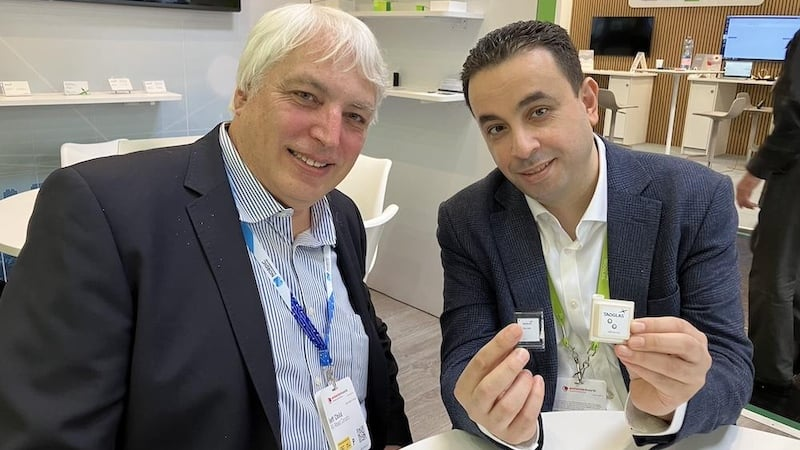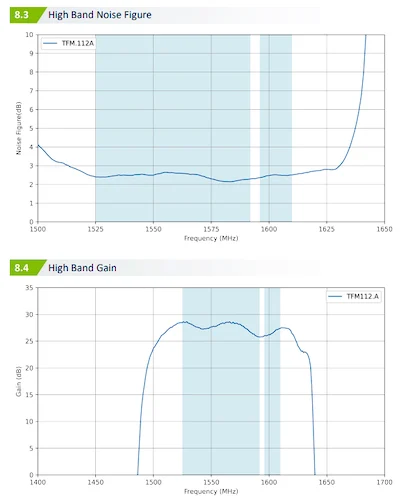Taoglas aims to simplify GNSS receiver design with new RF front ends that pack high performance in a small, commercially available package.
Taoglas aims to simplify GNSS receiver design with new RF front ends that pack high performance in a small, commercially available package.
At Embedded World 2025, Taoglas showed off six new multi-band GNSS modules for future IoT-GNSS applications. While GNSS technology is fairly mature, the integration of amplifiers, filters, receivers, and antennas can pose a challenge to designers, especially as devices continue to shrink in size. To address these limitations, Taoglas’s newest front-end modules offer a highly integrated RF front end in a small package.

All About Circuits’ Jeff Child spoke with Baha Badran, global head of engineering at Taoglas, about the company’s new products.
To better understand how Taoglas’s new modules can benefit GNSS designers, we talked with Baha Badran, global head of engineering at Taoglas, to learn more about what specific problems Taoglas hopes to address with its new offerings.
Highly Integrated GNSS Front Ends
Taoglas has released six multi-band GNSS front-end modules to its portfolio, including the TFM.100A, TFM.100B, TFM.110A, TFM.120A, TFM.112A, TFM.115A (datasheets linked). Among Taoglas’s new TFM series, designers can choose a multi-band module to best suit their own specific applications, with band options including L1, L2, and L5 bands. All devices are available in an SMD package, with typical board areas of 15 mm × 15 mm.

The high-band noise figure (top) and gain (bottom) highlight the high out-of-the-box performance of the TFM series, improving flexibility without bespoke engineering efforts. Image used courtesy of Taoglas
In terms of RF performance, the TFM series packs amplifiers, filters, and impedance matching into a single package, making integration with antennas and other receiver technologies as easy as possible. All devices support an input P1dB of -31 dBm or better, with at least 25 dB gain and low noise figures across the entire operating region. Finally, each device operates off a single DC supply voltage ranging from 1.8 V to 5.5 V, giving as much flexibility as possible.
“The customer doesn’t need to worry about anything,” Badran said. “They just drop this in their board and it simplifies the complexity. At the end of the day, that’s what you need.”
Improving GNSS Receive Performance
While positioning technology has been around for some time—GPS since the 1960s and GNSS since the 1990s—modern applications continually demand higher accuracy and precision from their positioning signals. Take a self-driving vehicle, which may heavily rely on GNSS positioning alongside cameras and radar technology to stay within a lane. Applications such as synthetic aperture radar also heavily rely on accurate GNSS measurements, with advanced techniques such as real-time kinematics (RTK) providing up to 1 cm of accuracy.

The compact size of the TFM series allows them to be integrated into a variety of applications, giving designers more flexibility for future innovation. Image used courtesy of Taoglas
Despite all of these advanced techniques for accurate position measurement, GNSS still relies heavily on the RF characteristics of the receiver. If, for example, a receiver has a very high noise figure, it may be impossible to adequately measure position using a GNSS receiver. As a result, the RF front-end is a critical building block for GNSS-enabled electronics that normally requires careful design, optimization, and integration efforts from designers.
“Everybody started to use these GNSS receivers and antennas in IoT products—lawn mowers, autonomous driving—so the cost and complexity has to come down.” Badran said. “This is what we’re trying to offer here: dropping the price, maintaining the performance, and simplifying the integration for the engineer customers.”
Small, High-Precision Positioning
Although Taoglas has identified navigation, transportation, and robotics as target applications of their new devices, the utility of a compact and high-performance RF front end for GNSS sensing could be of great value to designers in a broad range of electrical engineering sectors. As more devices become “smart,” the improved performance and time-to-market using the Taoglas front ends could be beneficial.
Taoglas' new RF front ends, along with its associated evaluation boards, are available now.
-
Tel
+86 180 2549 2789 -
Wechat

 BOM
BOM Cart()
Cart() English
English Russia
Russia Korean
Korean
